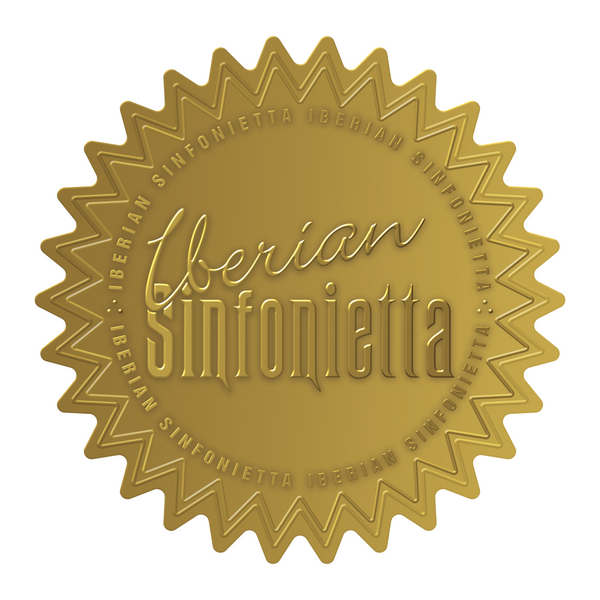
GETTING TO KNOW IBERIAN SINFONIETTA: MARYLUZ MORENO ROJAS
Dear audience:
Within this section that is “Getting to know Iberian Sinfonietta”, today we will dedicate this entry to Maryluz Moreno Rojas . She is the head of the second violin section. It is a precious work that he develops due to the function that this section has in the repertoire. In each Iberian Sinfonietta concert, she, like the rest of the string leaders and the other musicians, display all their art, focusing on the result, the music, in an entire process of work, dedication and talent. And for this, this section of the blog was born, to become aware and get to know each interpreter and their work.

What is your role at Iberian Sinfonietta? What feelings does it generate in you?
I am head of the second violin section, and as such I try to transmit the conductor's instructions and requirements in the best possible way, as well as unify the sound with the first violins and with the rest of the sections of the orchestra. In the orchestral formation, the second violin has a very rhythmic character, so you have to be very precise, and the majority of the melodies produced are based on the rhythmic base of both the second violins and the violas. You have to have a lot of communication with the conductor to be flexible in tempo changes, or for the rest of his agogic indications, for example if he wants to go to a pianissimo or an accelerando; In short, section heads are responsible for ensuring that these changes occur quickly and effectively. The work done in Iberian Sinfonietta is quite chamber-based, similar to how work is done in a string quartet, so the continuous communication between the rest of the musicians is fluid and very rewarding. Furthermore, the repertoire that is performed is fabulous for highlighting all these issues.
Tell us about yourself and your relationship with music.
Personally, I can't imagine my life without music; I have been playing the violin since I was
memory, and I soon knew that I wanted to make it not only my passion, but my livelihood. In addition, I have explored other instruments and other areas. My interest in acting has led me to be very active and participate in different orchestras and chamber groups over the years, however, I have always dedicated a lot of time and energy to another aspect that I love, pedagogy, and after For many years as a violin teacher, I currently work at the "Manuel Carra" Professional Conservatory in Malaga, work that I combine with ongoing training activities for which institutions such as the University of Jaén or other conservatories call me. At the zenith and combination of these two passions, performance and teaching, my largest personal project to date emerged, the creation of a young string orchestra that I have directed for more than a decade.
The next program, and last of this course, until September when we begin the new season, is made up of two great works, which do you prefer, Pulcinella or Prague?
Who do you love more, your father or your mother? It is difficult to choose between these two pieces, both are masterpieces of unrepeatable musicians and, although different in terms of conception and era, both are similar in that indefinable halo that surrounds music created by a genius. However, this time I have a couple of reasons to opt for Stravinsky . To begin with, Pulcinella is a character in the Commedia dell'arte of Italian theater, and I personally adore theater, both as a spectator and as an amateur actress. It is also a work composed for ballet, and performing its orchestrated version is refreshing. Finally, Pulcinella has several solos within the second violin section, solos that I will be lucky enough to perform, and that always provides me with a small challenge and enormous interpretive enjoyment.

What opinion do you have of the cycle that each Iberian Sinfonietta course develops?
It seems to me that the cycle is very well conceived, starting with the selection, which is a breath of fresh air for both the musicians and the spectators, since very popular classic works are combined with world premieres, not so well-known works by great authors and prominence is given in a varied way to different instruments, such as the piano or more recently the guitar. Also noteworthy are the agreements that open the orchestra's door to young composers and performers, and the presentation of the concerts is very educational and entertaining thanks to the interventions of presenter Jorge Rodríguez Morata . Finally, in general, the fact that a city council like Fuengirola is committed to culture by offering these free concerts to its population seems to me to be a luxury that is not always appropriately valued.
Anything you would like to add...
My hope that Iberian Sinfonietta continues to grow and develop during
for a long time, promoting contact between new and veteran musicians, and bringing classical music closer to citizens, who often see it as something foreign to them, but when they have the opportunity to experience it up close, they always enjoy it enormously. On a personal level, I find it highly satisfying to contribute to this, and it is a pleasure to do so from a well-conceived orchestra, with immaculate organization and planning as conscientious as that carried out by the director, Juan Paulo Gómez , something that greatly facilitates the task for us. musicians and it is always appreciated.
Once our interview is over, we wish him all the luck in the world in his multiple projects and we will enjoy his art next Saturday, May 20.
Jorge Rodríguez Morata
Pedagogical content coordinator
